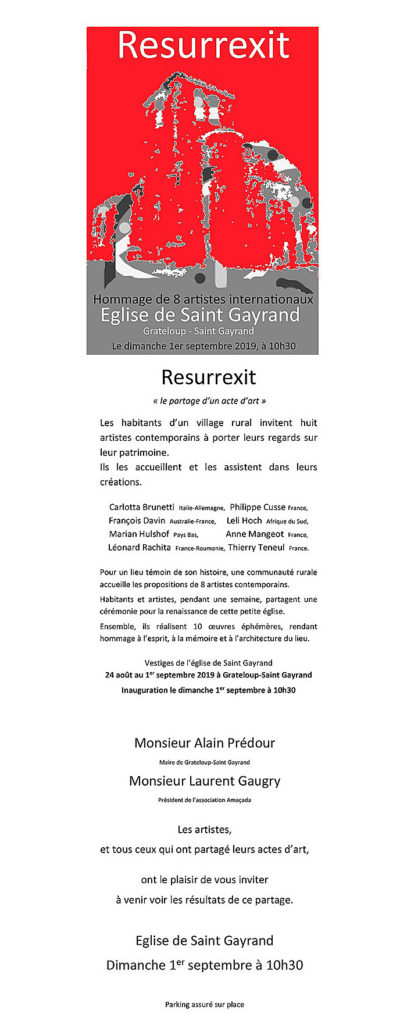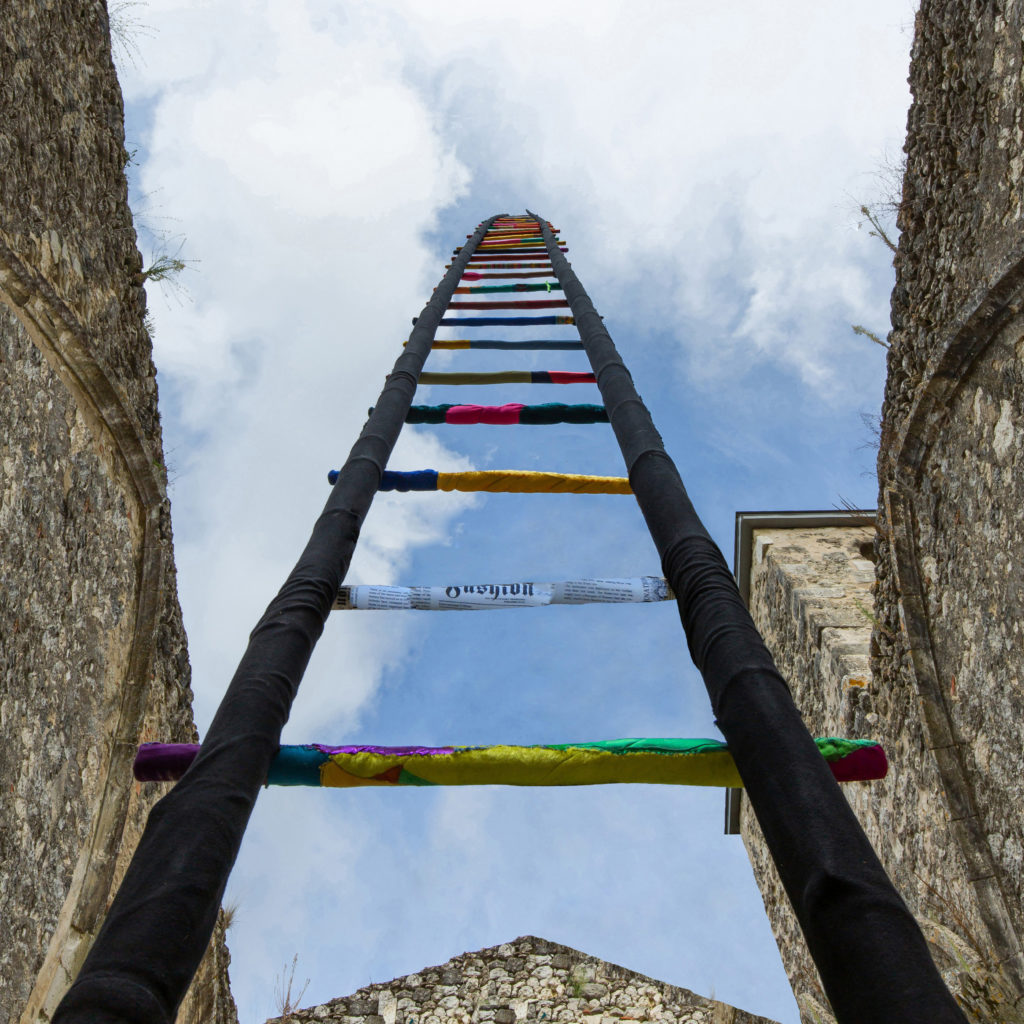
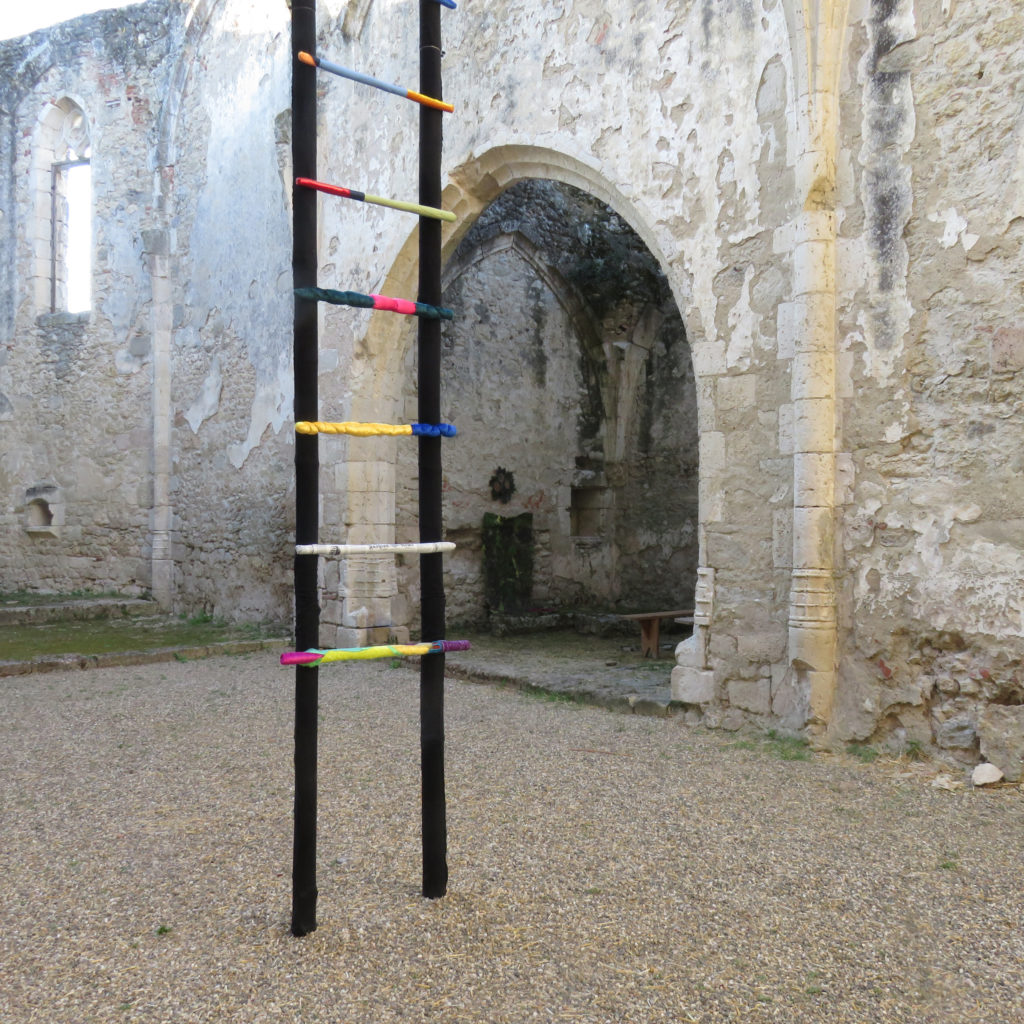
Grateloup Saint Gayrand, France
August – September 2019.
Work: Échelle au Ciel (Stairway to heaven)
3 video’s:
Procession,
Construction,
Exposition
Scroll down for English text
Du 24 août au premier septembre 2019 j’ai participé au projet d’art Resurrexit à Grateloup-Saint-Gayrand en France. J’ai construit une échelle, pour faciliter les âmes de tous les victimes qui sont mort auprès de l’église, de monter au ciel.
Les échelons ont beaucoup de couleurs, de sorte que la montée soit attirante. Les matériaux principaux utilisés sont le bambou et le velours. L’échelle monte au-dessus des murs de l’église et a une hauteur de 12 mètres. Le haut de l’échelle est fouetté par le vent, parce qu’il n’est pas toujours facile d’atteindre le ciel. Il y a 27 échelons, parce que c’est 3 fois divisible par 3.
Les habitants de Grateloup-Saint-Gayrand donnent une grande contribution à la construction de l’échelle, en fournissant des tissus, en cousant et en aidant avec la montée. Ainsi l’œuvre d’art est un véritable produit communal. C’est un cadeau mutuel entre l’artiste et les habitants du village.
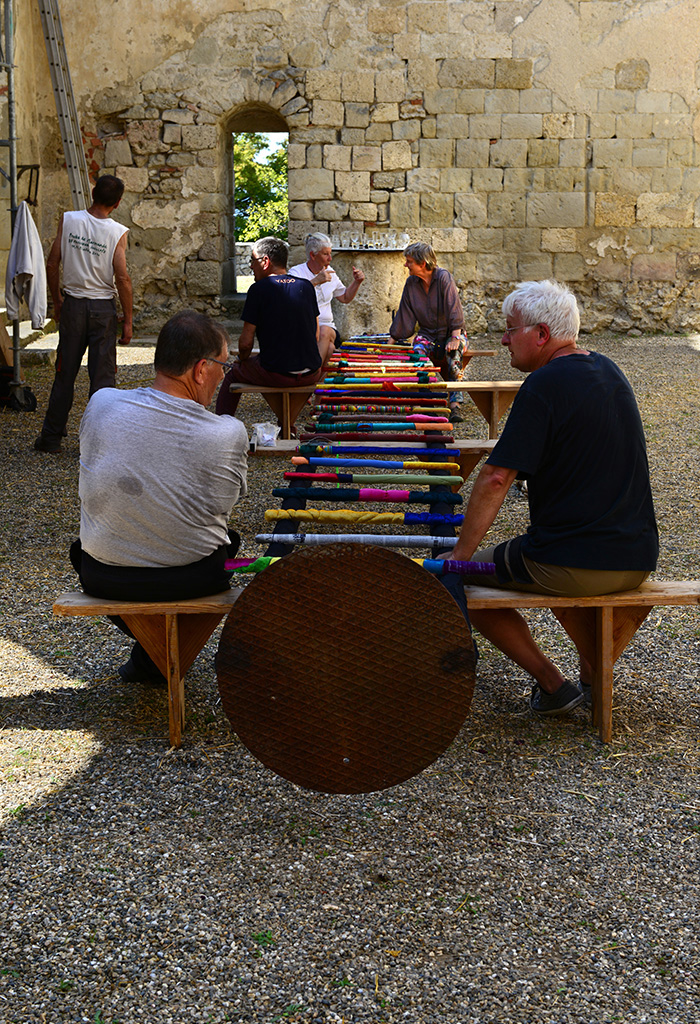
Huit artistes ont développé leur création inspirée par l’église de Saint-Gayrand. Leurs œuvres d’art sont inspirées à l’histoire de l’église et à l’endroit.
L’église a vu beaucoup de victimes: pendant la guerre de 100 Ans (1337-1453), pendant la réformation du Calvinisme (1562-1598) et aux incinérations de sorcières aux bûches, dont la dernière eut lieu en 1662. À l’occasion de la révolution en 1789 la plupart des bâtiments religieux furent pillés ou vendus à l’état, beaucoup de prêtres et pasteurs furent massacrés.
Récemment un toit a été mis sur le clocher et l’escalier. Le reste de l’église consiste en murs.
L’église se trouve au sommet d’une colline et a été récemment sauvée de ruine. Elle offre une source riche en histoire, architecture et religion aux artistes.
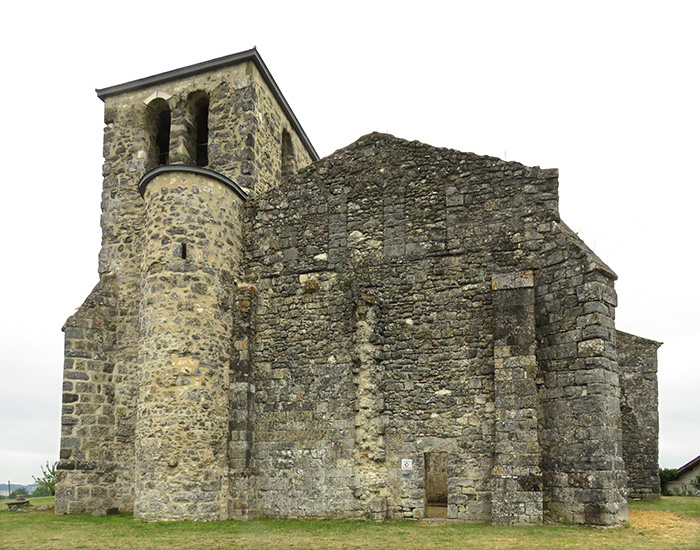
——————————————————————————-
English text
In August 2019 I participated to the art project Resurrexit in Grateloup-Saint-Gayrand. I constructed a site-specific work ‘Stairway to heaven’. The ladder, standing in the middle of the church, is 12 meters high and rises above the walls. The top of the ladder is whipped by the wind, because it’s not always easy to reach heaven. The rungs are multicoloured, in order to make a pleasant mount. The main used materials are bamboo and velvet.
The inhabitants helped to construct the ladder and donated pieces of textile, making a contribution to the mount of the souls. It’s a mutual present between the artist and the inhabitants.
Eight artists developed their site-specific creation dedicated to the church of Saint Gayrand. This building on a hill top, offers a rich historical, architectural, and religious context for site-specific artists’ visions.
The art works are based on the history of the church and the area.
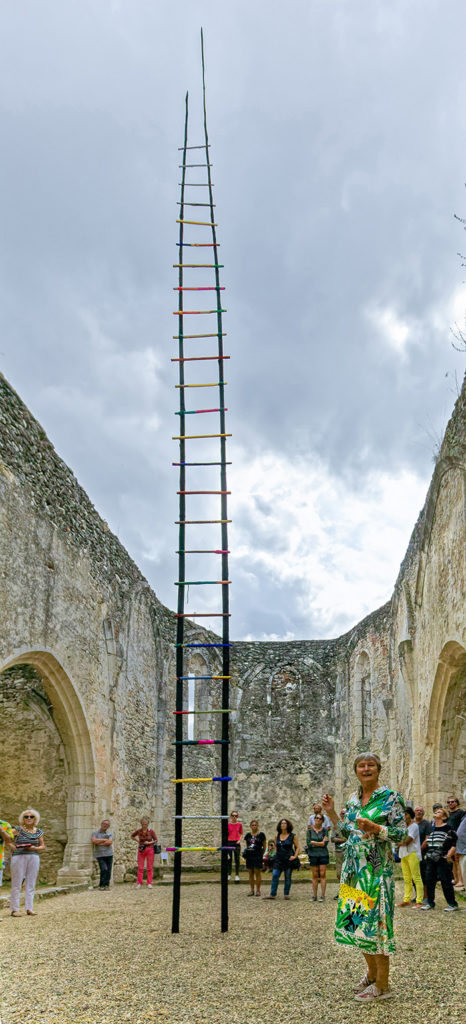
History of the area
The origins of the first main conflict between France and England happened here. The Duchess Alienor of Poitou first married to the King of France who gave her Aquitaine, subsequently married the heir of a powerful French family, Henri II Plantagenet who eventually conquered England. This was the origin of the English kings’ claim on the whole western part of France and of the 100 Years War. From 1337 to 1453 the region passes several times from England, to France, to the County of Toulouse and back… until Joan of Arc helped finish it…
The church has seen many victims during the 100 Years War (1337-1453), during the reformation of Calvinism (1562 – 1598) and at witch trials (the last one took place in 1662). During the revolution in 1789 most religious buildings were pillaged or sold to the state, many priests and pastors were massacred.
In the XVIth century, many locals opted for Calvinism. A major conflict opposed the Kings and Catholics to the Protestants. The most horrible crimes were committed both sides. The open wars lasted from 1562 to 1598. On that date, the new king, Henri de Bourbon, ex-protestant leader, having returned to the Catholic faith, succeeded into reaching a treaty, the Edict of Nantes, that gave an acceptable level of freedom to Protestants. In 1680, the parish of St Gayrand counted only 5 Catholics for 350 Protestants.
By breaking the Edict of Nantes in 1685, Louis XIV imposed the Protestants, called the Huguenots, to come back to Catholicism or emigrate. Many moved to Prussia, or the Netherlands and from there to the US, and South Africa, where they brought their local vines and wine technology. The Protestants who converted by force back to Catholicism after 1685, were described by the bishop of Agen as « tepid believers ».
Independently from the religious context, the neighbouring village of Grateloup (today united to St Gayrand) saw in 1662 one of the very last witch trials and executions in France.
In 1787, 2 years before the French Revolution started, Louis XVI had promulgated full freedom of cult for Protestants and Jews, but the Revolution was profoundly anti clerical and finally anti religious. Most religious buildings were pillaged, or sold as belonging to the State. The priests and protestant pastors alike were forced to pledge allegiance to the Republic or were imprisoned. Many were just massacred. After a relatively quiet XIXth century, in 1904, the Republic nationalised all the belongings of the church. The survival of the buildings would then depend on the goodwill of municipalities.
The two villages of Saint Gayrand and Grateloup have been united as Grateloup-Saint Gayrand in 2002.
History of the church
The initial church was built (Romanesque style) in the XIIth century, then pillaged and ruined by English troops during the 100 years War (XIII-XIV centuries). It was rebuilt at the end of the XVth century in Gothic style, still visible in the stained glasses structures that remain.
Pillaged by Protestant troops, the bells were taken away.
The building was restored in the XVIIIth century. A bell was cast and baptised Dominique in 1750. This bell did last ring on the 8th of May 1945 to celebrate the end of WWII. It was sold in 1964 to a community of Polish miners for their chapel in the north of France and it disappeared.
The anti-religious French Revolution and massacre of the local priest added to the miseries of the building. In 1895, due to insecurity of the structures, cults were interrupted.
In 1923, the roof over the nave fell off. Since 1988 a group of inhabitants has created an association to save and restore the building. It has joined forces with government support to stabilize the top of the walls and put a roof on the bell tower and its staircase. The rest of the church consists of walls.
The association is trying to gather resources to continue the restoration.

